In this post, we will explore the library books that my 4x-great-granduncles, James Tainsh and William Tainsh, checked out in the early 1800’s from the Innerpeffray Library near Crieff, Scotland.
First, a little bit about the library. It was founded in 1680 and was the first lending library in all of the United Kingdom. The founder was a wealthy landowner, Robert Hay Drummond. It’s hard for us to appreciate today how innovative and shocking it was for a wealthy family to allow the common rabble to browse and borrow from their personal book collection. Read more about the history of the library here.
A “Borrower’s Register” kept track of the borrowers, the books they checked out, and whether or not they were returned. Let’s take a look at entries for the Tainsh boys, shall we?
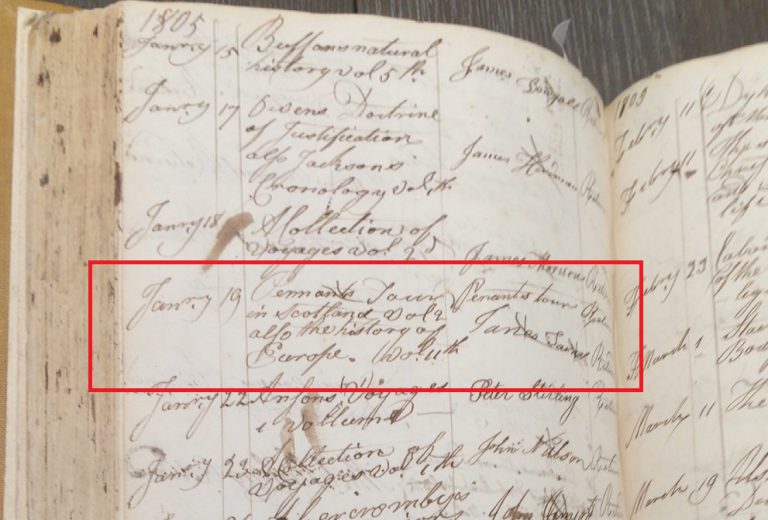
By the way, the library is a good five miles from Crieff – so imagine the determination it would take to make this journey on a cold winter’s day. Surely he had a horse – but it’s possible he may have walked.
On the first entry, January 19, 1805, it shows that he checked out two books: “Pennant Tour in Scotland, Vol. 2” and also “The History of Europe, vol II”. The Pennant book is all over the internet – you can look at page by page images of it at archive.org and even download a PDF copy. It’s part travelogue, part history book, and part social commentary. Be sure and glance through “Diseases” and “Cures” starting on page 41, and “Superstitions” on page 44.
The second book I actually got to hold! Here’s a shot of the title page in the book (“Modern History is particularly your business”, says Chesterfield in a note on the title page).
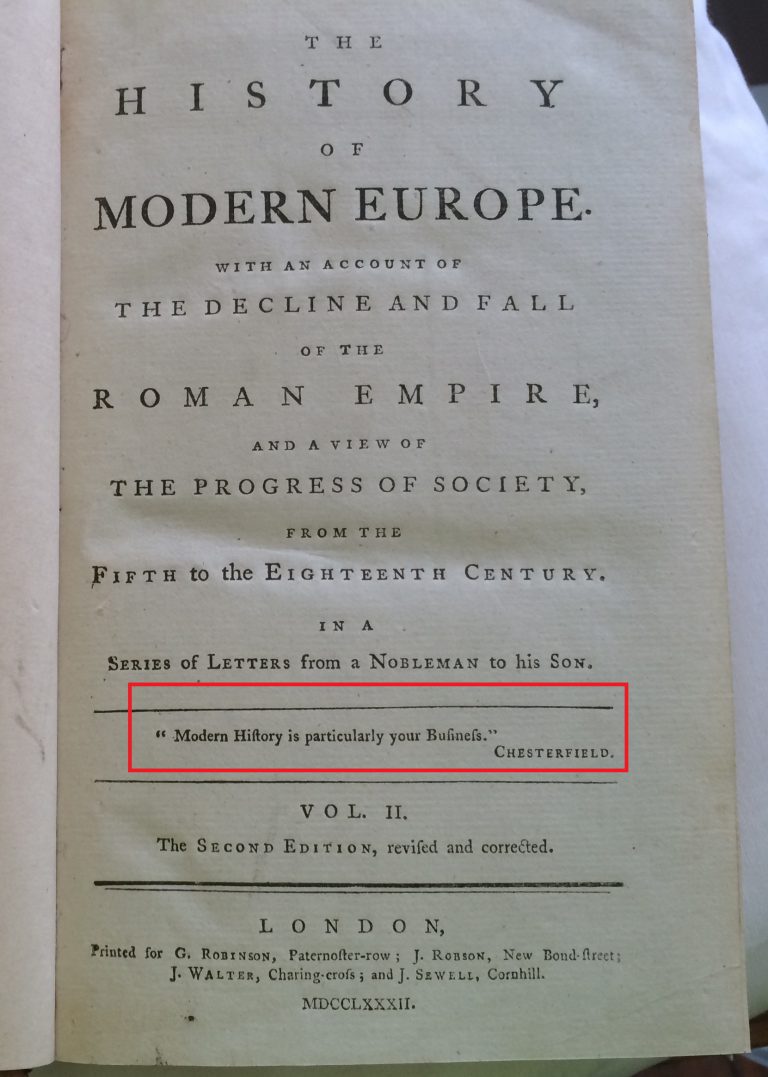
Yes, this one is ALSO available at archive.org, although the online version is a later edition than the one at Innerpeffray. It’s an important historical work – Barnes & Noble has reprinted it. The author, who wrote anonymously at the time but was later revealed to be William Russell, wrote the book int he form of a series of letters sent by a fictional nobleman to his son.
These are a couple of impressive books for a 21-year-old, wouldn’t you say? It suggests that he is curious about his home country of Scotland and its place in the context of Europe as a whole.
He must have liked the history book so much that he came back on March 22 of that following year to check out another volume in the series. The register doesn’t identify which one; it states “One vol. of the History of Europe”.
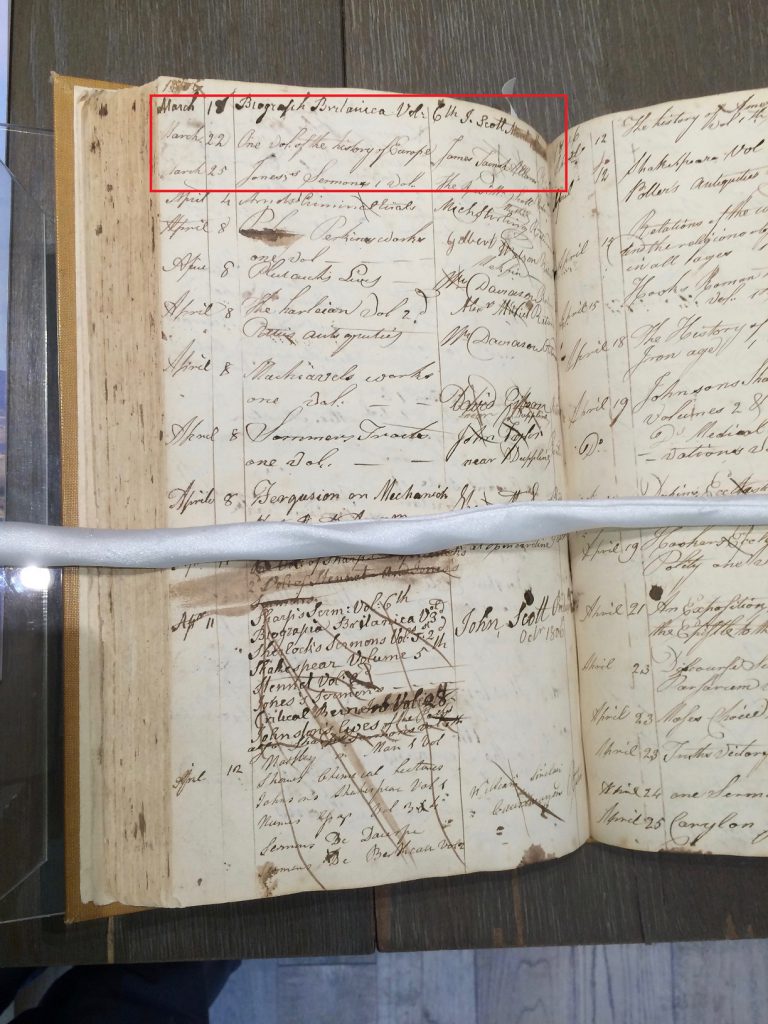
The borrowers name is listed as James Tainsh Allan. The staff told me that they see the “Allan” name quite often and they have determined that it means the borrower is a resident of the Allan boarding house in Crieff. Can we see that on the map? Why, yes I think we can! Going back to the 1822 map, we see that “Mrs. Allan” has an establishment on the town square. (The small letter “b” signifies the Perth Arms Inn, right next door.)
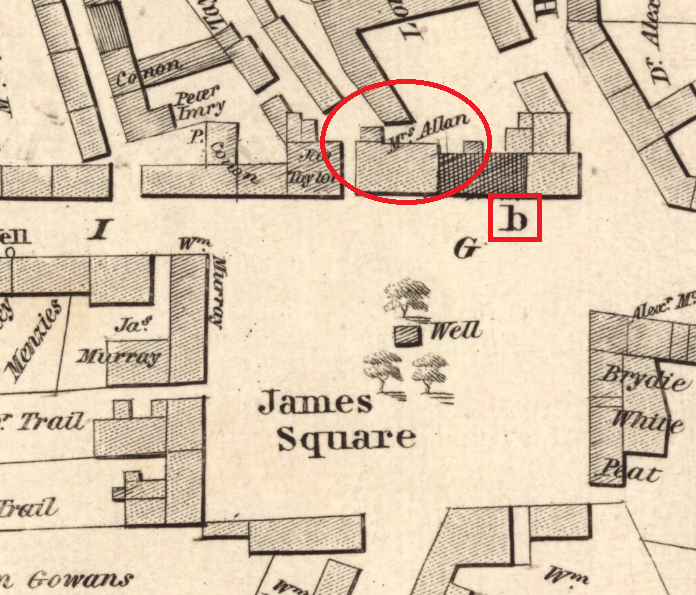
By the way, it’s this boarding house connection that points toward the borrower being young James Tainsh Jr., and not the father James Tainsh.
James is on a roll now. He’s back at the library again just a month later on April 29, 1806. This time he switches genres:
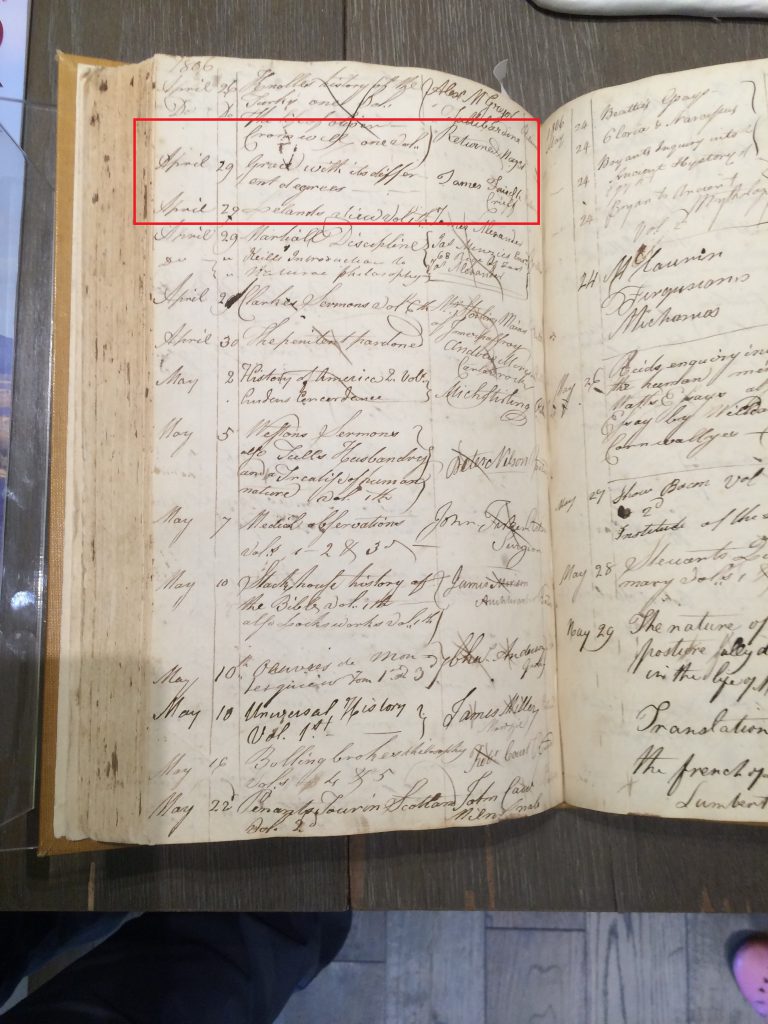
The short-hand description “Grace with its different degrees” signifies a book with a much longer actual title: “Grace: the truth and growth and different degrees thereof” by Christopher Love. Love was an influential religious leader in the United Kingdom, and a venerated martyr among Scottish Presbyterians. He was executed by the English in 1651, but this book of sermons was still circulated 150 years later. In fact, it is still in print today and widely available in university and research libraries. You can even download it for free to an Android device – and probably Apple too, if I kept looking.
James returned to the library again in October, this time bringing his younger brother William with him. They checked out two books together.
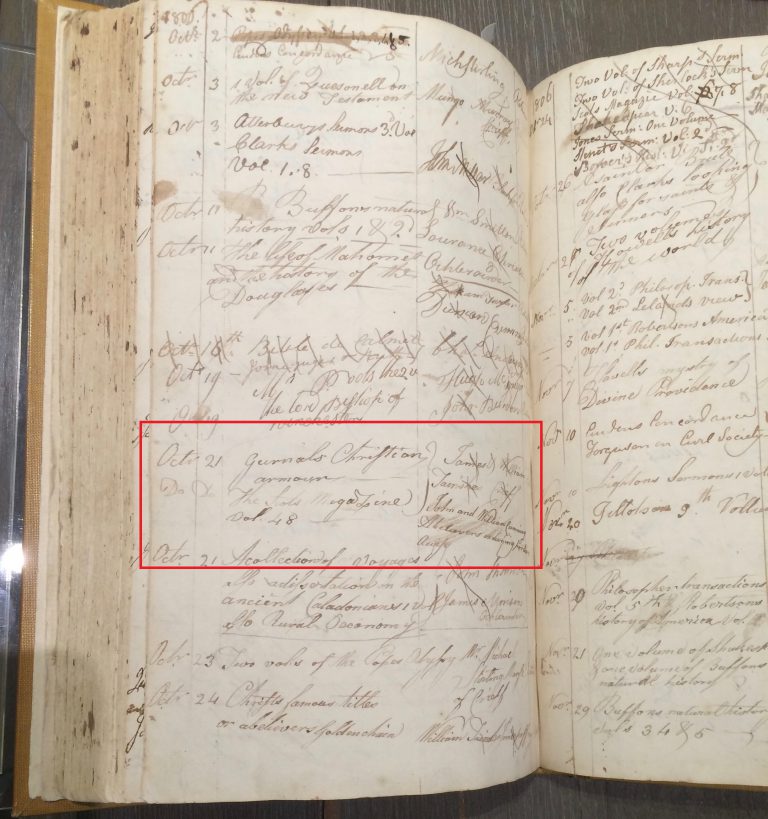
I suspect it was James who selected “The Christian in Compleat Armour” by William Gurnall. This is a powerhouse of a Christian book, still in print today and gets rave reviews on amazon.com (although honestly, the reviews look like a coordinated campaign to me). It is considered to be part of the Puritan tradition (as is the Christopher Love book, actually).
I would guess that it was 17-year-old William who chose Volume 48 of the “Scots Magazine”. The Scots Magazine is the oldest magazine in the world still in continuous publication! This particular compilation is all over the place on the internet and you can download it for free at Google Books. It contains all the issues from the year 1786, so it was sort of old news by the time William checked it out 1806. Still, Scots Magazine would have been a fun mix of politics, analysis, poetry, science and silliness. Go to the index to see all the articles that appeared in 1786. Benjamin Franklin even had a couple of articles appear for publication!
James and William returned all the books they checked out. William was a one-hit wonder, and James’ interest apparently waned after the fall of 1806. Or who knows – maybe he moved away or even died! I haven’t yet been able to trace the Tainsh boys beyond their library days.
And I wonder, did they let 11-year-old Elizabeth “Betty” (my 4x-great-grandmother) have a peek at their treasures? These books were so rare and wonderful, they may have kept them out of the grubby hands of a little sister.
So isn’t it amazing that we can read for ourselves every single one of the books that the boys checked out? What an amazing time we live in.
A couple of final anecdotes. While the library staff was helping me learn about the books my ancestors had selected, one of the other volunteers attempted to engage Dale, who was trying his best to be a good sport about the whole library thing, and probably looking a little droopy. The volunteer showed him a copy of Volume 38 of Scots Magazine,, which included all the issues from 1776. He turned Dale’s attention to the August issue, which reprinted the Declaration of Independence. Of course, the Declaration would have hot off the press at the time! The editors of Scots Magazine took an intense dislike to the whole affair (I guess by 1776, they were firmly in the England camp when it came to disruptive colonists!)
Anyway, it’s quite a hoot to read the words we hold so dear, “We hold these truths to be self-evident, that all men are created equal.” Then there’s a giant asterisk and a ripping critique – “In what are they created equal? Is it in size, strength, understanding, figure, moral or civic accomplishments, or situation of life? Every ploughman knows that they are not created equal in any of these.” And it goes on and on like that. Read for yourself, it’s pretty funny. It kept Dale happily occupied for quite a while!
Another book they had on display was an expedition report of John C. Fremont. He was an early explorer of Colorado and the west. I flipped open to a random page and found where he mentioned visiting Fort S. Vrain – which is less than 10 miles away from my house! I guess even in 1806 I would have said, “what a small world we live in.”
Here’s a few more pictures of the library grounds and the displays.












WOW! What an incredible experience! Not only were your Tainsh boys curious about history an d the world they lived in, but well read! Quite remarkable. I love the anecdote about the Declaration of Independence! Tell Dale that the Declaration of Independence was based on the Declaration of Arbroath, written in 1320. A declaration for Scottish Independence!
Love it, Karen! That our ancestors also liked to read! A great heritage.